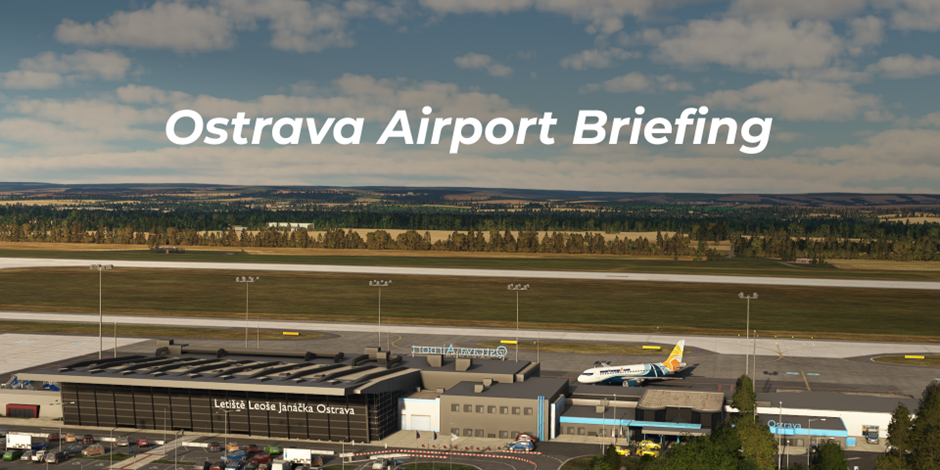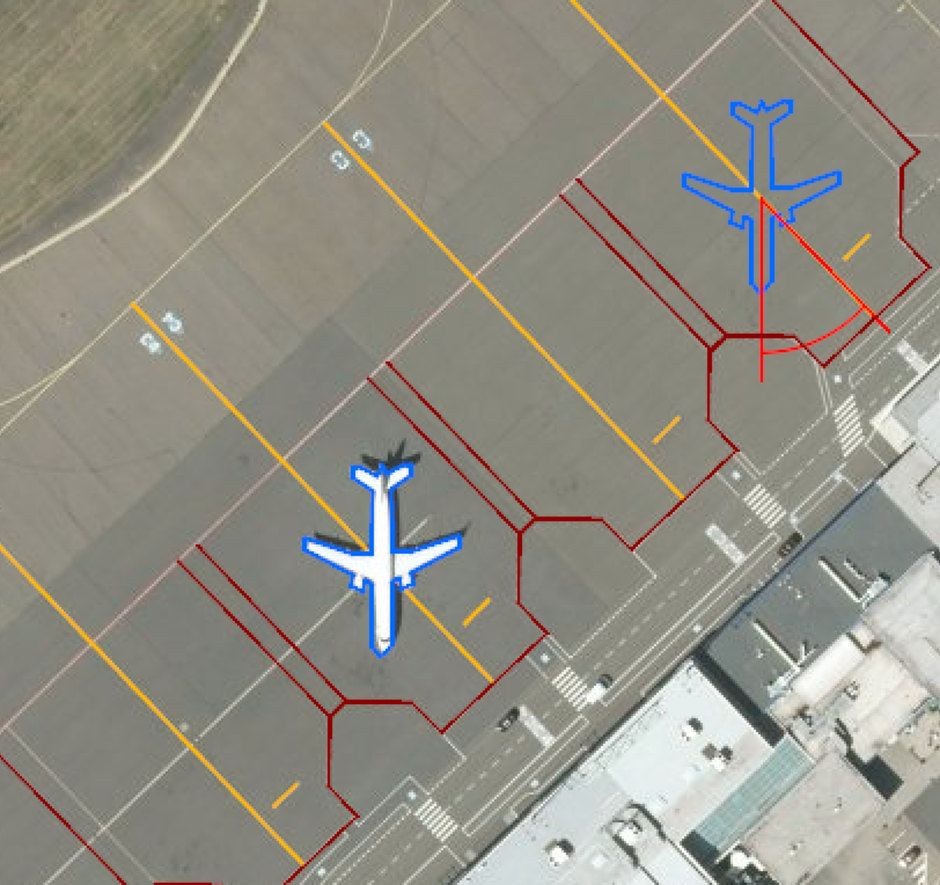¶ Ostrava Airport
The information in this document is not intended for real aviation. It is only intended for computer-based flight simulation.

Ostrava Airport (LKMT/OSR) is one of the regional airports in the Czech Republic. Our virtual airline offers flights from Ostrava especially in the summer months, when charter flights to seaside destinations are operated from here.
This document summarizes essential information you should know for a realistic flight simulator experience.
For more information, please refer to the real-life Aeronautical Information Publication (AIP):
https://aim.rlp.cz/ais_data/www_main_control/frm_en_aip.htm
¶ Scenérie
Recommended LKMT scenery for MSFS:
Flying Partners Slovakia - payware
flightsim.to - freeware
Recommended LKMT scenery for X-Plane:
FSPilot_CZ - freeware
Recommended LKMT scenery for P3D:
Ivo Pořický - freeware
¶ Arrival
The airport has one runway, 04/22, with a length of 3511 metres and a width of 63 metres. An ILS approach is available for runway 22. For both directions of the runway, RNP, VOR, or NDB approaches can be used (though for runway 04, RNP approach is most commonly used).
Southeast of the airport is the Beskydy mountain range, forming a significant terrain obstacle.
If an aircraft heading to Ostrava Airport flies over the Beskydy mountains or over the territory of Poland, it usually maintains an altitude of at least FL100 until it passes the edge of the mountains or the Czech-Polish border. Flights at lower altitudes are subject to the pilot agreeing to entering Class E airspace. This is followed, if necessary, by a somewhat steeper descent.
Passenger flights use the Central apron (Apron C) near the terminal. The markings on the apron correspond with parking facing the terminal, but usually, the so-called alternative parking method is used: the aircraft is turned 30° to 45° to the south before stopping. The adjacent stand in the direction of rotation remains unoccupied. The following picture illustrates this.

In addition to commercial passenger operations, the airport is also home to training activities of local aeroclubs, cargo operations, and an aircraft maintenance centre and paint shop. Do not confuse their aprons with the central apron.
In the real world, an intense presence of migratory birds is observed in the vicinity of the airport, especially in the morning and evening hours. Their average flight altitude is 500 ft above ground level.
¶ Departure
Passenger flights use the Central apron (Apron C) near the terminal. The markings on the apron correspond with parking facing the terminal, but usually, the so-called alternative parking method is used: the aircraft is turned 30° to 45° to the south before stopping. The adjacent stand in the direction of rotation remains unoccupied, and the aircraft departs the stand under its own power (without using pushback). An illustration can be found above.
At Ostrava Airport it is permitted (subject to fire assistance) to refuel with passengers on board.
The length of the runway is more than 3.5 km. It is possible to perform an intersection departure, i.e. to enter the runway through one of the taxiways, and start the take-off roll without taxiing all the way to the runway threshold, if conditions allow.
If departure using an SID is undesirable, a visual or omnidirectional departure may be performed. Visual departure is only possible during daylight hours. An omnidirectional departure is flown straight ahead, with a minimum turn altitude of 2000 ft for both runway directions.
In the real world, an intense presence of migratory birds is observed in the vicinity of the airport, especially in the morning and evening hours. Their average flight altitude is 500 ft above ground level.